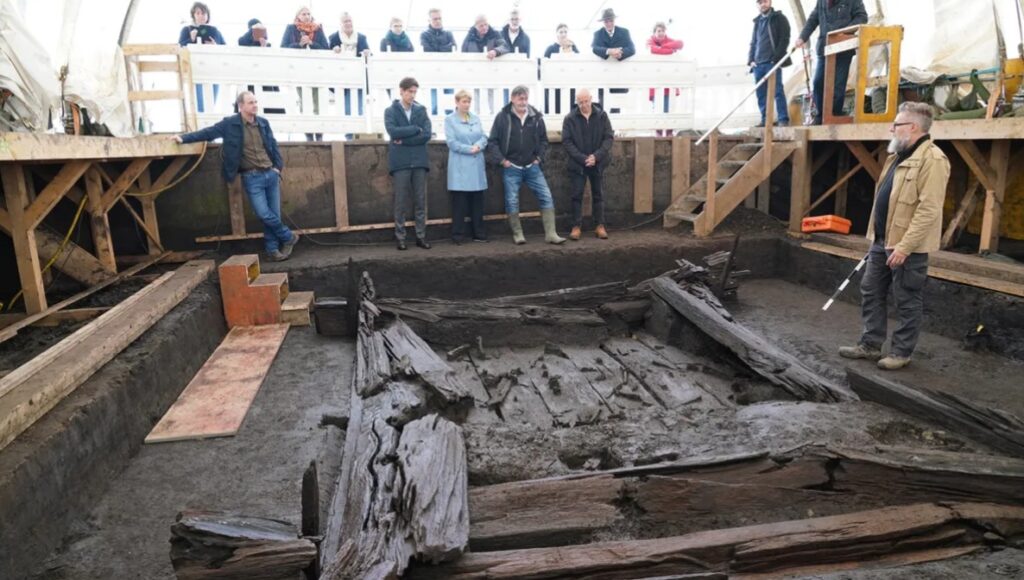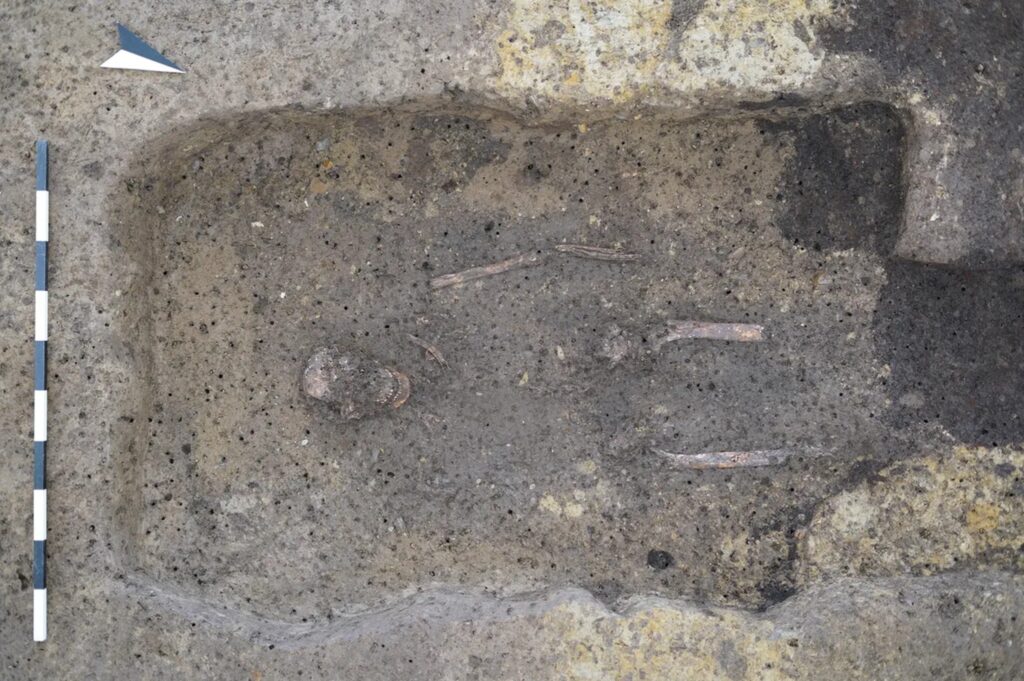Recently, archaeologists in southern Germany uncovered a 2,600-year-old Celtic burial chamber, marking a significant discovery in archaeological research. Located near the town of Riedlingen, this remarkable find has been described as a “stroke of luck for archaeology.” It is only the second intact Celtic burial chamber ever discovered in Germany, providing a unique opportunity to explore the ancient Celtic culture.
A Special Discovery: A Wooden Ancient Tomb
This ancient burial chamber was primarily constructed using large oak timber, a strong and durable material, yet susceptible to decay over time. However, thanks to the damp conditions and groundwater protection, the chamber has been remarkably well-preserved, allowing archaeologists to study its structure and age in greater detail. The chamber measures approximately 3.4 by 4 meters, which is considerable in size compared to other tombs from the same period.
What makes this discovery even more remarkable is the quality of the timber construction, showcasing the craftsmanship and woodworking skills of the Celts. The use of large oak beams reflects the sophisticated techniques and tools the Celts employed, which were in use long before metal tools became widespread.

Evidence of the High Status of the Deceased
The burial chamber is located at the center of a large burial mound, suggesting that the person interred there held a high status within Celtic society. The construction of such a large and complex tomb not only indicates respect for the deceased but also reflects the importance of burial rituals, with a focus on safeguarding the body and its possessions for the journey to the afterlife.
In addition to the chamber’s structure and size, nearby tools discovered by archaeologists help to date the tomb more accurately. Using tree-ring dating methods, researchers estimate the tomb’s construction around 585 BCE, placing it during a period of significant development and change in Celtic history.
Advanced Techniques and Tools: A Leap Ahead of Its Time
One of the most striking aspects of this discovery is the use of large oak timbers in the construction of the burial chamber, showcasing the advanced knowledge of the Celts in utilizing and harnessing natural resources. Oak is not only a durable wood but also resistant to decay, which helped preserve the tomb over millennia. This reflects a deep understanding of the environment and the ability to apply that knowledge in building structures.
The tools found near the site provide additional insight into the development of Celtic civilization during this period. These tools can help archaeologists better understand the daily activities, agriculture, and craftsmanship of the Celts, offering a more complete picture of a little-known ancient culture.

The Significance of the Discovery
This discovery is not only important for archaeology but also for our understanding of Celtic culture and society. Each ancient tomb like this is not merely a burial site but also a symbol of religious beliefs, values, and the community’s rituals surrounding death. By exploring these tombs, archaeologists can reconstruct an important part of the ancient European historical narrative.
The discovery of the 2,600-year-old Celtic burial chamber in Germany highlights the importance of protecting archaeological heritage. It helps deepen our understanding of the development of ancient civilizations and encourages further research into forgotten cultures.
Conclusion
With these impressive findings, the 2,600-year-old Celtic burial chamber is not just a treasure of construction techniques and burial customs but also opens a window into how ancient cultures evolved, adapted, and preserved their legacies through the ages.
